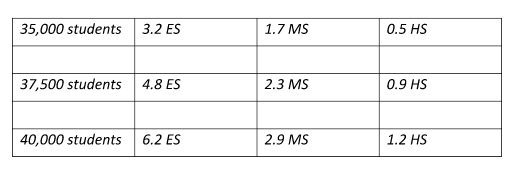![]() Peter’s Take is a weekly opinion column. The views and opinions expressed in this column are those of the author and do not necessarily reflect the views of ARLnow.com.
Peter’s Take is a weekly opinion column. The views and opinions expressed in this column are those of the author and do not necessarily reflect the views of ARLnow.com.
As our County Board Chair, Katie Cristol, said in an eloquent personal statement last month (after Arlington approved its Fiscal 2019 operating budget), the current rate of growth in our expenditures for the many things we value is no longer sustainable.
Our Chair elaborated:
“We can’t grow per-pupil annual increases in the transfer to Schools when the number of pupils are growing at the rates we’ve seen. We can’t increase the general fund contributions to Affordable Housing Investment [AHIF] fast enough to support every compelling affordable housing project, when projects a decade ago required $5 or $6 million in gap financing and current projects need $20 million.”
To enable our community to participate effectively in the hard budget decisions that lie immediately ahead, Arlington needs new approaches to quantify both the short-term and the long-term fiscal impacts of the population growth Arlington expects.
Short-term fiscal impacts
We need project-specific, prospective fiscal impact statements for each discretionary development project. New, large multi-unit residential projects do not pay for themselves. They produce more new costs than new revenues.
A recent “cost of community services” peer-reviewed survey of 125 jurisdictions nationwide found that the mean ratio was $1.18 of incremental costs incurred compared to every $1.00 of incremental revenues generated.
Project-specific, prospective fiscal impact statements were among the key recommendations of the 2015 Community Facilities Study Group (CSFG), chaired by former County Board member John Milliken. Such statements are important because they will inject vital, new, objective input into the County’s planning and budgeting.
Kinds of project-specific impact analyses
Most of our Northern Virginia neighbors already are using these tools. Examples include Stafford County, Loudoun County, Fauquier County and the City of Falls Church.
The noted regional economist, Dr. Stephen Fuller, prepared an analysis for Stafford County, and confirmed that residential development does not pay for itself. His analysis also informed an Urban Development Area presentation.
These kinds of analyses are ones that Arlington County staff could and should do internally. Advanced software is available that can be tailored to Arlington’s circumstances.
Arlington’s first steps toward fiscal impact analyses
At its April 21 meeting, under the leadership of John Vihstadt, the County Board took some first steps in the direction of fiscal impact analyses.
As part of its budget guidance, the Board directed the County Manager to develop for Board review by the end of this calendar year a plan for preparing and making public periodic, retroactive cost-benefit analyses of new residential and commercial developments on an aggregate rather than a project-specific basis.
But, greater progress is being blocked once again by the Arlington County attorney’s resistance to the CFSG recommendation for prospective, project-specific fiscal impact analyses. He is unwilling to publish his detailed legal reasoning for review by independent legal experts.
Longer-term fiscal impacts
The County and APS should collaborate to develop financial projections out to 2035 for both capital and operating budget spending, utilizing at least three assumptions: most likely case, optimistic case(s), pessimistic case(s).
The results of these projections, together with the major assumptions underlying them, should be published and shared for discussion with the community.
Conclusion
The County Board needs to deploy new approaches to the fiscal impacts of development. This will enable Arlington residents to weigh in knowledgeably on how much we should spend on each thing we value.


-600x600.jpg)
